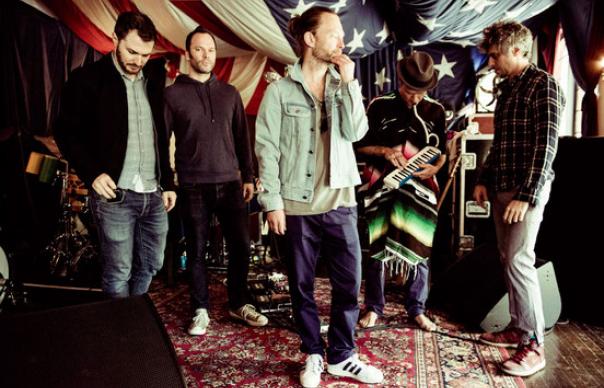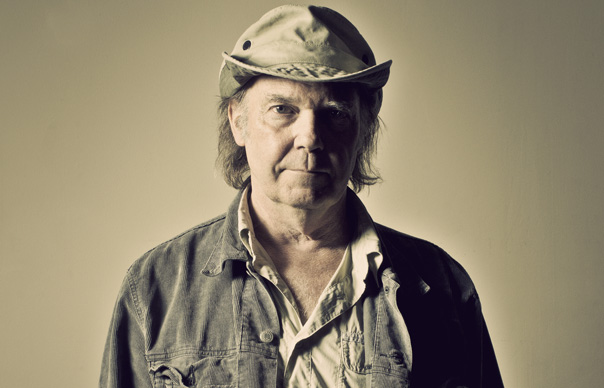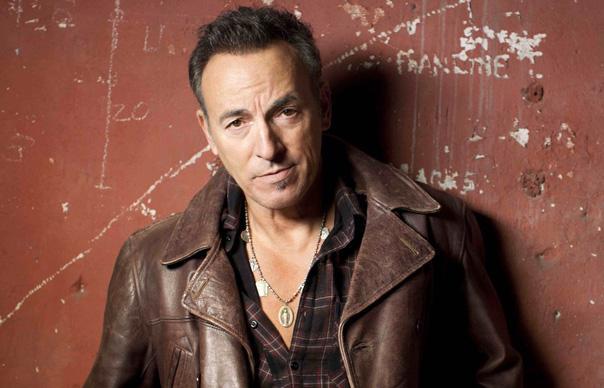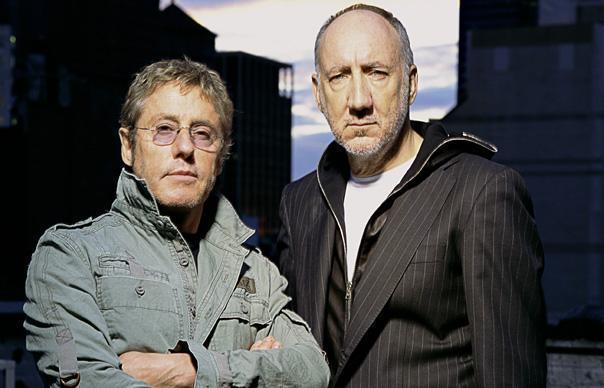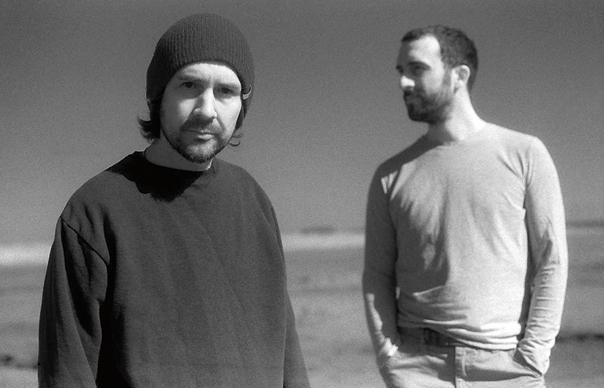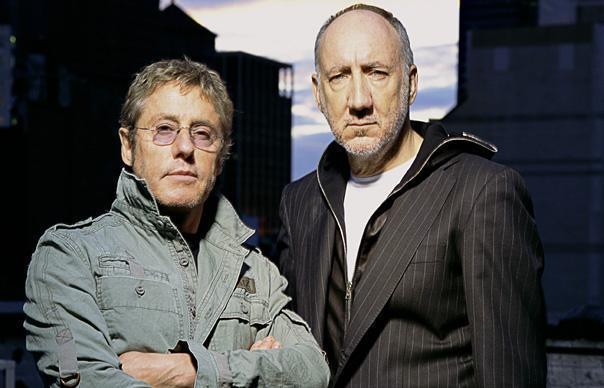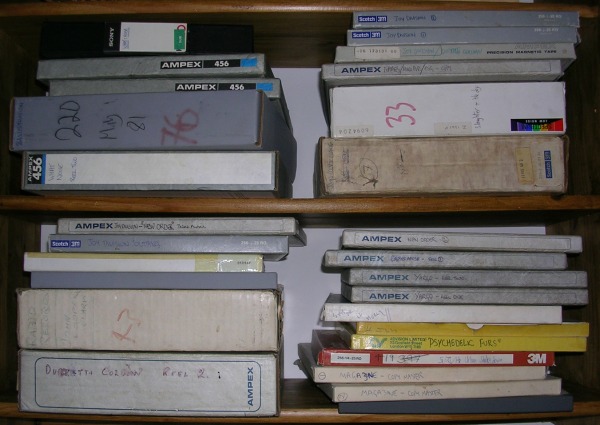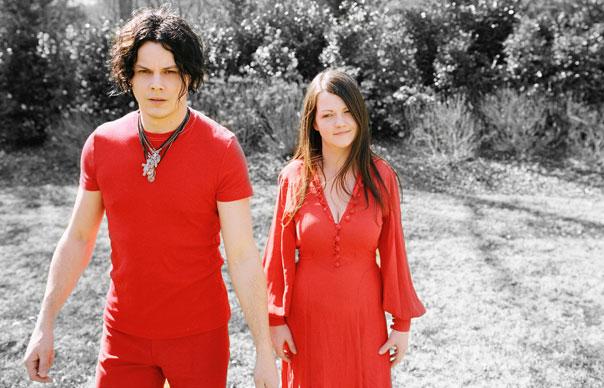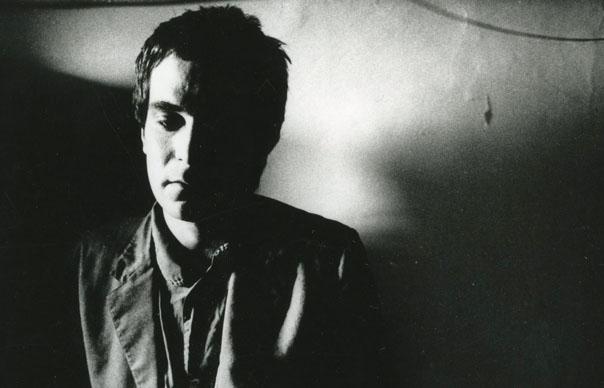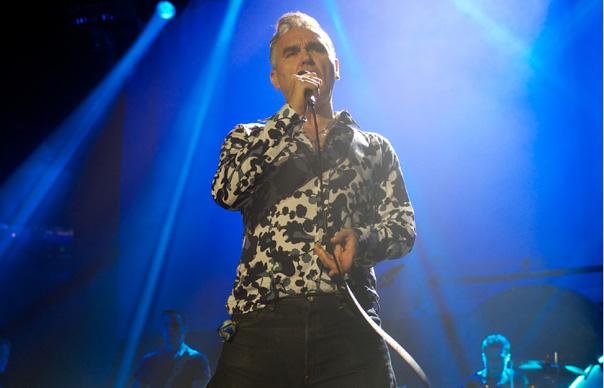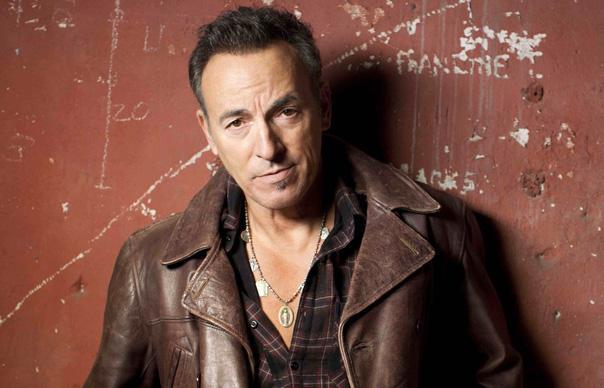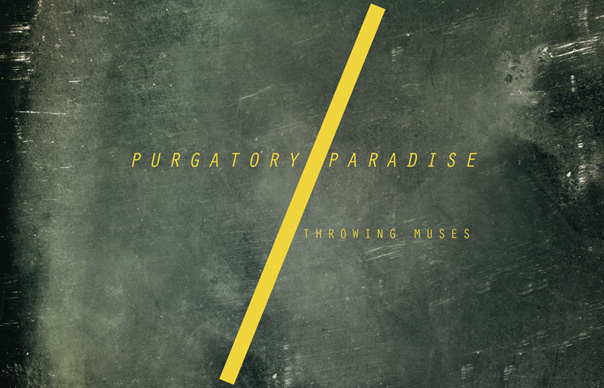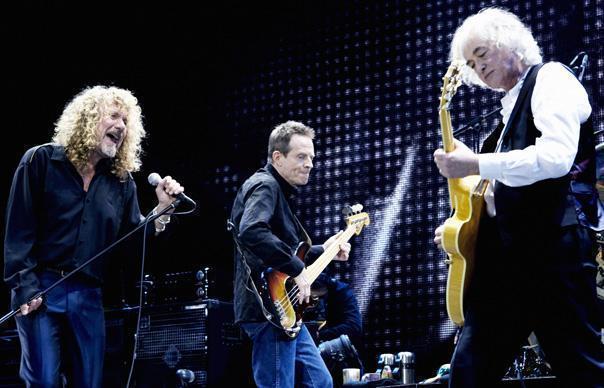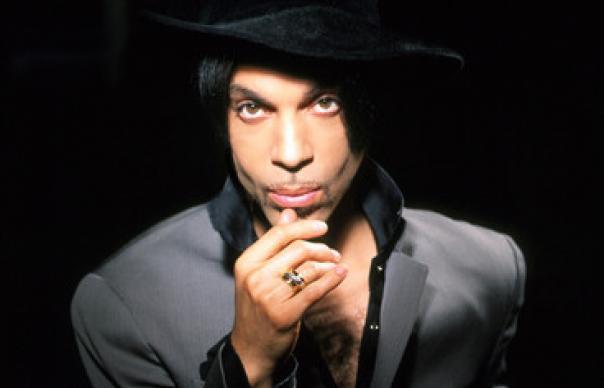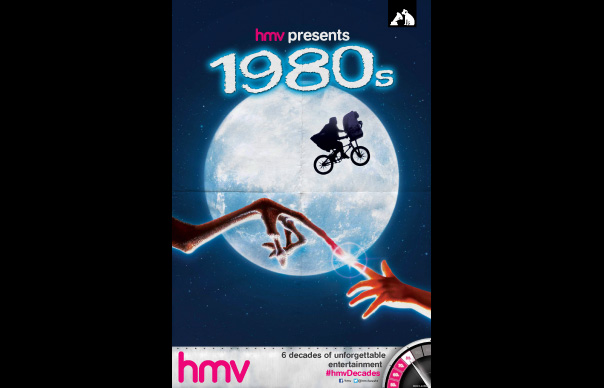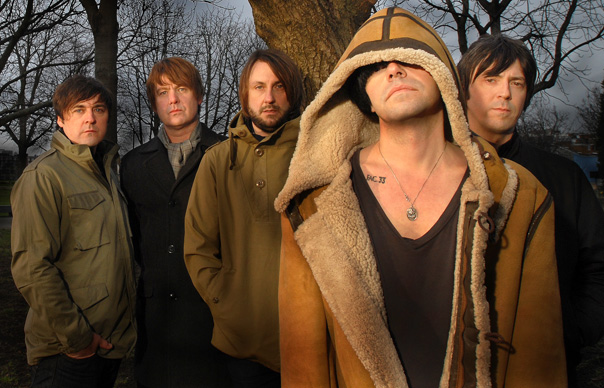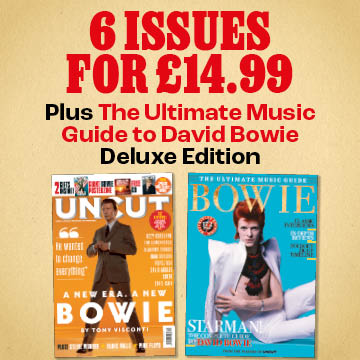In this week’s archive feature, from our August 2012 issue (Take 183), Uncut is granted a rare audience with the remarkable Young, busier than ever. To be discussed: the return of Crazy Horse, Americana and what would become Psychedelic Pill; his autobiography; his new movie; Archives; his family. What motivates an inexhaustible genius? “I spend money as soon as I get it…” Story: Jaan Uhelszki
_________________
A late spring day, and it is upwards of 80 degrees inside Neil Young’s customary hangout in Northern California, the Mountain House. Young, though, has sat himself in front of a roaring fire, and is trying to appear oblivious to the heat, wearing as he is a thick poncho, of all things.
In less than a week, a full moon lunar eclipse will signal the release of Young’s 34th studio album, Americana, his first with the doughty Crazy Horse for nine years. “Neil had us come over to the ranch every month on the full moon,” says guitarist Frank “Poncho” Sampedro of the recording sessions that resulted in both Americana and another new album, the latter scheduled for release in the autumn.
“We were in the groove right away,” Young says. He is talking about his reunion with Crazy Horse. “There was nothing for us to get over. We were already there. We didn’t have to work at it.”
Working at something seems anathema to everything that Crazy Horse stand for. They have always been the passionate rough riders accompanying Young on his more harrowing musical excursions, playing songs from the inside out: perverting rhythms, harmonies and sonics, dismantling sound until it becomes more a prickly Zen kõan than a piece of music.
After the 1986-87 tour, though, you said you were never going to work with Crazy Horse again.
“Never is a huge word.” By the fire, the left side of Young’s face is becoming redder and redder, but he refuses to move, or even take off the poncho. That’s all you’re going to say?
He smirks, the son of a journalist who knows all the tricks and never makes it easy. “That’s all I’m going to say.”
_________________
Forty minutes or so from San Francisco, Broken Arrow Ranch is located high in the mountains that encircle Stanford University – home to countless Nobel Prize-winners, one American president and past prime ministers of Japan and Israel, as well as three poet laureates and novelists Ken Kesey and Jeffrey Eugenides. When Young bought the ranch for $340,000 cash back in 1970, it consisted of 140 unruly acres. Over the years, he has bought up adjoining properties, cajoling neighbours into selling parcels of land, until the original homestead of a log cabin, a pond and a visiting flock of red-winged blackbirds has grown tenfold, now taking up over 1,500 acres of mountainous terrain and farmland.
The ranch can only be reached by a thin two-lane ribbon of highway that pirouettes and dips through the aggressive topography of the Santa Cruz foothills. In this primeval redwood forest, mobile coverage is unreliable, and risks of wildfires, flash floods, mudslides, landslides and seismic activity are common. Dangerously inaccessible territory for a wilfully inaccessible man, perhaps, where a sign on the unpaved road reads, ‘Time Stops Here’. At the very end hangs a rusty railroad sign to warn off trespassers one last time. It may date from the late 19th Century; nevertheless, the sentiment is more threatening than kitsch.
That may be as good a way as any to describe Americana, too, with its philosophical and sonic reworking of some late 19th-Century murder ballads, Dust Bowl-era folk songs and, of course, “God Save The Queen”. It is ostensibly because of Americana that Young has consented to this interview – though, as ever, he has a glut of other projects on his mind, not least an autobiography, Waging Heavy Peace, due in October, and a third film with Jonathan Demme, Neil Young Journeys.
“My boss is my muse,” says Young. “If I had an idea for a song, I’d get up right now and go. I’ve learned if I don’t get it, it’s gone. It’s a gift. If you don’t pick it up, what kind of respect are you giving it? Whatever it is, I’ll go do that first. I just follow the idea to where it leads me. That’s what I do. It’s just the way it is. It’s easy that way. I’m lucky.”
A 10-minute ride uphill from Broken Arrow, Mountain House is an old loggers’ roadhouse that was turned into a restaurant in 1989. For the past 30 years Young has been a patron of this place, hidden in a redwood grove at the top of King Mountain. It featured in his Greendale film and in his “Unknown Legend” video, and you can occasionally find him there, drinking beers out of longneck bottles at the panelled bar, or with his family, picking at buffalo steaks and salads – dressing on the side – in the dark, rustic dining room. Among the sporting paraphernalia on the wall, there is a Fender guitar emblazoned with seven Sticky Fingers decals and four scrawled autographs. The polished brass plate beneath it reads: “Rolling Stones Guitar compliments of John Lydon.”
Lydon, it transpires, is an unlikely friend of the Mountain House’s owners: he won the guitar and donated it to them. Young, meanwhile, does not appear to have allowed any of his personal arcana to be mounted on the mauve and dull orange walls. The next day, National Public Radio host Terry Gross tells Young that she thought the version of “God Save The Queen” on Americana was the Sex Pistols song.
Never one to miss a chance to make things awkward and unsettled, Young answers Gross deadpan, with a remark that hangs in the air for 10 seconds.
“Who are the Sex Pistols?”
_________________
Just after two o’clock, Neil Young carefully pilots his 1950 Plymouth Super Deluxe sedan down the steep gravel driveway of the Mountain House, bringing it to an elegant stop in front of a split-rail hitching post. Once a dull asparagus green, the post-war behemoth has big splotches of pink surface rust that resemble whole continents on its hood, door and top. What would Young have used as a leitmotif for his career if Devo’s Mark Mothersbaugh hadn’t artfully dropped the “rust never sleeps” line into “My My, Hey Hey…” back in May 1978?
The phrase endures, as prophetic and as revelatory as the day Young commandeered it from Devo. “It relates to my career,” he told Los Angeles DJ Mary Turner in 1979. “The longer I keep going, the longer I have to fight this corrosion.”
“Before Neil had the aneurysm [in 2005], he told me he used to feel like a giant, and now he feels like a leaf in the stream,” says film director Jonathan Demme, a regular Young collaborator. “It’s something that you see in people who arrive at a moment in their life, often by having a car wreck because they were driving drunk, or who have a horrendous drug overdose experience but survive. It’s called the ‘Lucky To Be Alive Club’. We know people like that, people who just like change. So that’s Neil’s version of the Lucky To Be Alive Club. It was a giant watershed moment. It’s allowed him to take bigger risks.”
Young exits his car with an almost rigid posture – despite a lifetime of back problems – and with a rather formal bearing, resembling a whole class of rugged leading men from the 1940s. But instead of a grey flannel suit, he’s cloaked in a shapeless poncho that brings to mind Clint Eastwood in A Fistful Of Dollars or, maybe more accurately, Bob Dylan during his Renaldo & Clara period.
It’s the same poncho he sports in A Day At The Gallery, a 40-minute silent film to accompany Americana, though today his eyeliner and rakish black hat from the movie are absent. He wears it again when Patti Smith interviews him at BookExpo America on June 6. Perhaps he is role-playing an Americana character come to life, conveying an artistic and aesthetic continuity, much as he used an old buckskin jacket to reconnect him to his youth when Buffalo Springfield reformed briefly last year.
Easing himself into a low-backed wooden chair by the fire, Young is fractionally more friendly than usual – often a bad sign for interviewees. Elliot Roberts, his manager since 1967, brings a plate of grapes and some perfect squares of Monterey Jack. Young peels the cheese off the white porcelain plate with great deliberation, as if they are playing cards, then looks at them before he consumes them without any particular enjoyment. He picks up a small branch of fat red grapes and begins eating them one by one, unobtrusively slipping them into his mouth, silently chewing as he listens to the questions.
Why did you decide to make an album of traditional songs that you heard as a schoolboy?
“I was writing a book, and I was remembering and writing about when I was in Thunder Bay, Ontario in 1964, playing with my band, The Squires. We had a gig at a coffeehouse there called the Fourth Dimension, and there was a band played there called The Thorns. Tim Rose was the leader of the band; he was kind of a pioneer of folk rock at that point. They did ‘Oh, Susanna’. When I heard them do it, I was really impressed with the arrangement, and so I had my band, The Squires, learn it. While I was writing the book, I had an idea to do a lot of other songs like that. I was looking for songs in this genre, old classics with a slightly dark tinge in the lyrics, that used to be kindergarten songs and schoolchild songs. Old American classics. I finally found enough songs, and I was recording at the time with Crazy Horse.”
So the idea to work with Crazy Horse again came first? It wasn’t that you had these dark, harrowing old songs and decided that the Horse was the right band to execute them?
“Yeah. It was just a matter of time. I was writing the book, and I had brought Crazy Horse to the place where we were going to record. I hadn’t written any new songs, so I decided to do those old songs.”
Did these traditionals function as a warm-up for the “real” Crazy Horse album due in the autumn, or were you always planning to release them?
“I did it because they were the only songs that I felt like doing. I didn’t know how many there were going to be when I started, but we started with a few and then we just got doing more. Then I got an album. We worked a couple of days a month for three months. I’d learn more songs, I’d arrange them, we’d come back and do them. About two and a half months ago, I went in and played it for Reprise [Records] for about 100 people. After the playback of the record, the president of Reprise got up and told everybody about how cool it was that, in these times, we had gone in and recorded these old songs of America that reminded us of where things started and what it used to be like, and what the spirit of America is like. I was going, ‘Wow, that’s pretty deep. I hadn’t thought of it that way.’
When we got going in the studio I realised that I was making a record – and I had a name for it before it was done. I was already calling it “Americana”. I wrote liner notes, since it really ended up a concept album.”
Was there a concept in mind when you did the second album?
“No. Just what’s happening. My concept was, let’s create songs that speak, that I can enlarge upon instrumentally. So if there was a concept there, that’s why the songs are incredibly long. Because they all have excursions on them between the verses, and so that’s what I do [Young told BBC Radio 4’s Front Row programme that the second album material was so long – one track lasting 26 minutes – that it may be a double CD release].”
So there wasn’t any intention to make a political statement like Living With War?
“Well, Living With War is sort of like ‘Ohio’. But instead of one song, it was a whole album.”
The folk-rocker-protest-singer part of you?
“That’s always been there… Well, not always. It wasn’t there in the very beginning, but it grew, showed up.”
Did you realise that there was going to be a second album early in the process?
“I realised I was in a groove. Right around the time Americana was finished, I started writing again, so I just kept on going. Pretty soon I had enough songs for a second album. This time I was doing all my own songs.”
How do you feel about Crazy Horse today?
“They’re great. I love Crazy Horse. I love all of them. I love Poncho, Billy and Ralph, and I love Danny [Whitten].”
How do you know when it’s time to work with Crazy Horse?
“I can just feel it. And I can feel it for a long time. Comes for a while, doesn’t just arrive. So yeah, it’s just naturally arrived.”
Do you all stay in touch? Or do you just call them when it’s time?
“We stay in touch in our own way. We’re not hanging out together all the time, but we’re in touch. There’s no need for us to hang out. We just are. We’ve been through a lot together. It’s still part of our lives; it’s not going anywhere.
“It’s a musical home for me. I’ve been in a lot of places that I really liked. But nowhere as much as this. I’m tapped in to the source when we’re all together. It’s not like a technical thing. The expertise is not that great. We don’t have to be; we just connect on this emotional thing. A soul level.”
What would happen if they got really good? Rehearsed a lot and got really tight and then sprung that on you?
“That’ll never happen. No. They’re not interested in that. The way they play, they play from the soul. They don’t play any other way. It could be as great and as technically great as they could ever be, and it wouldn’t make any difference to how they sound. They don’t have to overplay. They’re not going on American Idol. They don’t have to overdo it. They don’t have to over-accentuate all the surface things.”
There are maybe five or six unreleased Crazy Horse albums: Homegrown, Chrome Dreams, Toast, Oceanside/Countryside, Meadow Dusk…
“There’s quite a… there’s a few.”
What are the criteria for which Crazy Horse sessions come out and which don’t?
“Time. Time and space. Just how much time I have to put things out. Sometimes I finish things and I go, ‘I don’t want to put this out. I don’t want to put it out now.’ But that’s a different thing from playing it. Making it.”
What’s the mystique around Toast [an album recorded in San Francisco in 2000 with Crazy Horse, at the same studio used by John Coltrane. It was announced as part of Young’s Archives series in 2008, before disappearing from the schedules]?
“Toast is a good record. It’s a very dark record. Some people are not going to like it; some people are going to really like it. There are some songs on Toast that were on Are You Passionate?, and there are some songs on Toast that were maybe on something else, I don’t know. But none of them sound like they do on Toast.”
Is there a plan for it to come out?
“It will come out, because it’s done. And we’ve mastered it. I mean, it’s ready to go. It’s not a perfect record but it’s really an essential record. But I don’t want to get in the way of what I’m doing right now. There’ll be a time for it.”
I remember you saying that Crazy Horse would never do covers.
“I don’t look at these as covers. People call them covers but they’re not covers. Who’s covering ‘Clementine’? That’s not a cover of ‘Clementine’. It’s a version of ‘Clementine’. It’s our interpretation. Those songs have been done by so many people that we’re not covering anybody. Everyone owns them. They belong to everyone.”
Could you give me thumbnail sketches of Crazy Horse? What would surprise us about Ralph, Poncho and Billy?
“Well, the real thing about Crazy Horse is not the individuals. I’m just part of it. I’m no more important than anyone else. I happen to be known, whereas they aren’t. People say they can’t figure it out, and say, ‘Well, hell, they don’t do anything except when they work with Neil.’ But they do things. They just don’t do things that are in the public eye, but they’re exploring their music. They’re doing things they believe in. And when they work with me, they get seen. They do things that are just as valid when they’re by themselves as they do when they’re with me. It’s other people’s perceptions that are different. So it’s a group. There’s no one person that makes it happen. Take away one of those pieces and it’s gone.”
You said after Danny Whitten died that you couldn’t get back the chemistry, but there was a different kind of chemistry.
“Oh, yeah. Can never get it back. Just like I can’t do any more of the Ben Keith songs.”
I didn’t know that you’d made that decision.
“Yeah. Had to.”
You’ve also said about Crazy Horse that they bring a Coltrane type of guitar sound out of you. How does that work?
“Well, it’s not so much that it’s Coltrane. Could be it’s the landscape that Coltrane and Miles and everybody lived in. There’s a world that you can walk in and they get me there. We go together. We don’t go individually.”
You’ve said you like them because you can yell at them, but I think there’s another part, because you said in another interview they’re never intimidated by you.
“Oh, they can yell at me, too.”
Are they the only ones that you’ll take it from?
“No, I’ll take it from anybody who does it.”
You do seem to like it when people tell you the truth. I always thought that was part of what you liked so much about David Briggs and Jack Nitzsche.
“That’s really true. And most people actually like to be told the truth.”
But you’re an imposing figure. I’m not sure everybody does tell you the truth.
“I know they don’t, but I know that I get what I deserve from Crazy Horse. And they get what they deserve from me. It’s a group, we’re together. Living together in the world.”
_________________
Crazy Horse, says drummer Ralph Molina, is the place where “all the egos are checked at the corral. There’s no bull, Neil can be Neil. There’s no pretence. We’re just real, and we rock. I guess when he plays with other people it’s like he has to be the God they kneel to… Not that he wants to. But when he plays with us he’s like a fourth member.
“People get intimidated by him,” continues Molina, calling from his home near San Luis Obispo on California’s central coast. “You know what? I still am.”
“I’m someone who is not really sure, but leans more towards things happening randomly,” bassist Billy Talbot adds late one Sunday night, from his hometown in Northern California (population: less than 700; known more for fried artichokes than the distinguished celebrities who reside there). “The first time we played it was really natural. With Danny, there was something that just fit. Then, when we brought Poncho in that just fit, too. Those moves were made when we were in our early twenties or early thirties, and it had more to do with the circumstance and happenstance than anything else. But at the same time it’s worked all these years better than anything else that any of us have ever tried or done.
“Neil says he’s the most him when he plays with Crazy Horse. I think I’m the most myself as well. I think that when we’re at our best there’s a spiritual thing that happens in concert, that people are left with. And when they leave there they remember feeling that, even though they can’t necessarily decide what it was. Or if it was anything.”
_________________
When Young and Jonathan Demme previewed Neil Young Journeys in Toronto last year, the singer told the audience that his first reception there was really frigid.
You said, “I knew I was good, but I knew this was the wrong place.”
“Uh hum.”
I can’t believe you said that to your people.
“They weren’t ready for me. But I was ready.”
Were you born believing that your thoughts were always right?
“No, I just did what I wanted to do. The way to do something is to do it. I didn’t want to do something else and be known for not doing what I wanted to be known for.”
After you signed the contract for Waging Heavy Peace you said “writing books fits me like a glove”. Was it really easy for you?
“Really easy. I just sat down, and I decided I’m going to write a book. Nobody told me to write a book. The whole story is in the book of why I wrote the book, how I started, what got me started, everything about it.”
The Archives got you started, right?
“No. No. It’s in the book. The book’s coming out. You’d rather read it in the book.”
Honestly, I’d rather you told me right now.
“Well, I guess you’ll have to wait, because I’m not. Ha ha.”
Did you have a drill, writing every day at the same time?
“I’m not Vonnegut. I like to write in the morning. Like the time I was in Hawaii I’d get up at five o’clock in the morning and start writing, and I’d write until I was tired of writing and then I’d go paddleboarding. Then I’d come back and I might write a little more, but if I started getting tired I wouldn’t write. Yeah, just forget it. And then when it came back, it came back.”
Your father was a famous journalist and wrote 45 books. Did he give you any advice?
“He told me if you start writing, you’d be surprised what comes out. He said, ‘Even if you can’t think of anything to write, go sit where you write.’ I used to do that in the morning and suddenly I started writing about stuff. Some days I wouldn’t write anything.”
Did you hear his voice in your head while writing?
“I can still hear him, but not so much when I’m writing as when I’m thinking. Writing was a very easy thing to do. Things came out: What do you do, where do you go a lot? What are the recurring themes of your life? “
You’ve talked about how your patterns are easy to discern: “My career is built around a pattern that keeps repeating itself over and over again. There’s nothing surprising about it. My changes are as easy to predict as the sun coming up and down.”
“It’s repetitive. I’m just a creative person, writing songs and making albums and doing anything that I can do to distract myself from doing one thing too much.”
_________________
What Neil Young sees as repetitive, others call ruthlessness. “Neil scares me a lot,” Graham Nash told Jimmy McDonough for his 2002 biog, Shakey. “I don’t understand him. I don’t understand his ability to change his mind ruthlessly.”
“I’ve had to do all kinds of things that as a human being I felt bad about,” Young told me in 2005. “Working with different musicians, you have to be able to sever the ties and say, ‘I’m sorry. I’m going this way and you’re not coming with me.’ Someone said to me recently, ‘You’re quite ruthless.’ I woke up in the middle of the night and couldn’t get back to sleep for a couple of hours thinking of all the people I’ve worked with. People’s feelings are hurt, because their lives are changed. But I can’t help that. I’m ruthless for the music. It’s a tough thing, but that’s how you save the music.”
Young does keep returning to familiar artistic territory and stoical collaborators, but there is no regular or discernable timetable for when he might revisit them.
For Crazy Horse in particular, it must be hugely frustrating. From 1969 to 2003, Young appeared to be pulled inexorably back to them every two or three years. The nine years between Greendale – which Frank ‘Poncho’ Sampedro did not appear on – and Americana was the band’s longest hiatus to date. “It’s usually right on time, when Neil wants to do Crazy Horse,” says Talbot. “This time, it was almost a little too long.”
Sampedro calls from his beachfront home in Hawaii, where he lives next door to Clint Eastwood’s ex-wife Maggie and grows organic fruit. The guitarist joined Crazy Horse in 1975 to record Zuma, two-and-a-half years after the death of Danny Whitten, but he still feels something of an outsider. “After 37 years I’m still the ‘new guy’,” he laughs, but when he laughs, he is actually at his most serious.
In 2010, it seemed as if Crazy Horse were being reconvened, for the batch of songs that became Le Noise, Young’s collaboration with Daniel Lanois, and a solo record that, thanks to Lanois’ technological and intuitive genius, sounded not unlike a Crazy Horse jam.
“That was a weird record, wasn’t it?” says Sampedro. “That was our record, but here’s what happened. We got together before he did that. We played a few of those songs at Ralph’s house, and we did it two or three times, and then he just took off. I think what happened is he had everything he wanted to record and it was really urgent to him, and it was just taking too much time to reel the band in – I was still working at The Tonight Show [as an engineer for bandleader Kevin Eubanks, working on sequencing and Midi for the ensemble. Sampedro retired in 2010 to grow fruit in Hawaii]. So he just went on without us. But we could have killed ‘Love And War’, boy. It’s funny because when I just left the ranch last week, we were standing outside and Neil started singing that, and I looked at him, I said, ‘Oh yeah, we could do that. We don’t have to practise that. Just call it.’
“Neil can change his mind 200 times then change it back. I’ve had a couple of nightmares. I had my heart broken a couple times by Neil, and actually it’s just something you have to learn about him. He’s not intentionally doing it; he just gets caught up in what’s in his head.
“But man, I was crushed. Even on the last tour, we were in Florida and all of Ralph’s relatives were there. He planned to see them after the show. Everybody knew it but something happened and Neil wanted to split, so everybody had to split. Ralph was pissed off. We stopped somewhere up the road and Neil came on our bus and said, ‘Look, Ralph, man, I’m really sorry. I didn’t mean to do that to you. I am really sorry – but I’ll probably do it again.’ You can’t say Neil’s not honest about himself. He knows he does it and he just can’t stop himself.
“In my early days with Neil, I used to be frustrated all the time waiting to play, and as time went by I just learned that he’s going to go through his rotation of CSNY and Stray Gators, and then playing solo acoustic, but he’s always going to come back, so it’s something that you just know is there. As I got older, I developed a little more patience. And I’m always ready, and I always think we’re going to play, and I never, ever had the thought that we’d never play again.”
Even when he said he wouldn’t, after the 1986-87 tour?
“He says he’ll never play with us, but he doesn’t mean that. I think he’s just clearing his head to get on to the next thing. I think what happens is that Neil says those things because when he starts a new project he totally believes in that project, and whoever he’s playing with is the band he’s going to play with forever at that moment. And he really feels that, and he sinks himself into it 110 per cent, and that’s who he becomes.”
But is he the most himself when he’s with Crazy Horse?
“I don’t know. I’d like to say that, but I’ve played with him solo acoustic, and the people that show up for those tours are just as enthusiastic as any Crazy Horse crowd. I do know this – we’re the only group that he really can just jam with. We use the song as a catalyst to get to the ending where we can just freeform. And then the fun starts, and depending on how good the crowd is responding and how good we’re in touch with each other that night, it can go out the window or it could be a disaster, but we don’t care.”
What would happen if you, Ralph and Billy secretly rehearsed and became the tightest band in the world when you met up with Neil?
“What, we’re not? Ha ha. We always think we are tight and ready. When I worked at The Tonight Show, I actually learned how to practise and became a much better guitar player, but I think, all in all, that didn’t pan out with Crazy Horse. I hadn’t played in a few years when we got together, and I was just as rusty as ever. But we just played from our hearts, and that’s more important than knowing a lot of chops and being able to fly and be slippery on the guitar. We need to just bash away and find places that we can get comfortable, that’s when we’re at our best.”
Why do you think it’s been almost 10 years since you’ve worked with Neil?
“Well, he had other things to do.”
What did you think when Neil first told you he wanted to do these old, old songs?
“I was pretty uptight about it, but once we started playing ‘Clementine’, I was screaming and jumping around. I sang background parts on ‘Tom Dula’, and I didn’t have a mic, but I was singing so loud it bled through all the mics. Flying over to the first session, I watched Year Of The Horse on the plane and I was thinking, ‘God, I hope these guys don’t expect me to jump around and scream and all this stuff I used to, I’m 63 now. Not going to happen.’ We started playing, that’s exactly what I did.”
Did you look at Americana as a kind of rehearsal before you got to the second album?
“No, I never looked at it like that at all. When we did finish it and we played, we just started jamming. I didn’t even know it was a song, I guess Neil had it in his head but we played a song for 22 or 23 minutes and it was just a blast, because it was such a release from the other thing. There was no structure, and hopefully that album will come out and we’ll get to enjoy it. You never know with Neil… 150 unreleased songs, and we’re probably on half of them…”
_________________
Neil Young, predictably, doesn’t seem worried about any of that. He’s working on moving his Archives project to the internet, and insists that “eventually everything will come out”. Meaning the book, and the movie, and whatever else happens to occur to him.
“Writing a book was a distraction from doing one thing too much. It means that they paid me some money to write the book, and that means I don’t have to go on the road. Because I spend money as soon as I get it. I don’t care how much money I have, I can use it to do something. So I don’t save money.”
So you have to keep making it?
“Yeah. But I don’t want to just be out there pounding the boards to make money. So writing a book is great. It’s a whole other way to do it. It’s a whole other thing, and it’s not that different from writing songs. It just doesn’t have a melody. It’s the only difference.”
What is working with Jonathan Demme like? Do you use him as your foil?
“We just respect each other. We work well together. He’s an artist; a complete filmmaker. And I let him have his way, and he lets me have my way, and we talk about shit. We’re not intimidated by each other. He’s great. Very, very reinforcing.”
This film is called Neil Young Journeys. Journeys have always been a theme for you…
“Before you start constructing something out of it, I want you to know Jonathan titled it. Ha ha. He titles all my movies. They’re his movies. He’s the director. He’s the writer. He’s taking care of me. It’s still me. I don’t worry about it. Only if he asks me what I think do I tell him. He can do whatever he wants. He’s going to do the right thing.”
Do you have other relationships that are like that?
“No. Not really, no.”
Maybe with your wife Pegi?
“Well, that’s different, I respect what she says all the time. But on a creative level, Jonathan’s every bit my peer, if not better. So that’s how I look at it. He says something, I’m saying to myself, ‘Just listen to the master.’ I’m going OK, great.”
How was driving through all those places in Northern Ontario in the movie? Did it bring up a lot of emotional stuff for you?
“It did. I hadn’t been to any of those places in a long, long time. My brother took us to all those places. It was very cool. Trip with my brother taking us, hauling that old Cadillac he has? Like an ’80 Cadillac or whatever the hell it is.”
This is the third movie you’ve done with Demme. Will there be more things with him, now that you’ve completed a trilogy?
“Well, it is a trilogy now. But I think there’ll be more things. I certainly wouldn’t say no. We’ve always talked about doing a trilogy, but we didn’t really talk about what we’d do after we finished doing a trilogy, because we didn’t think we were going to do it this fast. But when he saw the tour for Le Noise, he went, ‘Whoa. I think this is something we have to get.’”
He said that the entire film took only four months to make. Do you feel like you work particularly fast? I remember Linda Ronstadt talking about how fast you recorded Harvest; that it made her anxious.
“Well, with Linda and James Taylor, you’ve got two of the best singers on the planet singing with you. You know the song and they’re learning it, they’re doing it for the first time – it has to be disconcerting. There’s preparation. Nobody sees the preparation. The preparation just happens in the background of a lot of the things that are happening.
“You can’t worry about it. Or what people think. I never do. I never did, really.”
_________________
Almost two weeks after the interview, Neil and Pegi Young are playing hosts at Letters Home, an exhibition of artwork by their daughter, Amber Jean Young. The venue is the Michael Rosenthal Gallery in San Francisco’s Mission district, owned by a former Stanford University Vice Provost, a well-known artist himself.
When I walk into the tiny jewel box of a gallery, Neil Young is pouring Chardonnay into plastic cups for the 50 or so attendees, while Pegi Young greets guests and poses for photos with her daughter. More affable and relaxed than at Mountain House, Young takes a thin pair of granny glasses out of a pocket beneath his, yes, poncho, and slips them onto the bridge of his nose. He walks over to the south gallery wall and closely examines every one of the six or seven canvases there – most of them with red dots on them, indicating that they’re sold.
He stops longest at a pastel piece embellished with a flowery purple script that reads, “When I remember I have mental illness somehow I feel less crazy.” He leans in close and remains that way for a while. Many of the pieces have quite unnerving sayings on them. But then the show invitation states that Amber Jean Young’s work explores “interpersonal, familial relationships and personal history… and addresses the issues, coping mechanisms and complicated emotions such as disappointment and failure that are derived from her experience.” Amber Jean’s words are not unlike lyrics, and I ask her whether she does any other sort of writing.
“I don’t,” she says. She has a tattoo of a jellyfish on her left arm, exposed by her hot pink sheath dress. “I write mainly when I have a dream. I’m the one who bolts upright and says ‘Where’s the paper, where’s the pen?’”
It makes me think of something Ralph Molina said the day before: “Music comes from the heart. Art comes from the heart and soul.”
When I leave, Neil Young is standing outside on the cement, in the cooling evening, talking to a young man. He is still wearing the granny glasses and that poncho, still cradling a half-empty plastic cup.
I touch his arm, and tell him he should be proud. “I am,” he says, fixing me with his steady blue stare.
Did you always suspect she had this in her? All the emotion, all the pain, the talent?
“I did,” he says proudly.
“I guess you must have. Didn’t you write ‘The Painter’…” I stop, not quite certain if the 2005 song from Prairie Wind was for his mother, Rassy (also an artist), or for Amber.
“Yes, I did write ‘The Painter’ for her,” he says. For once, Neil Young’s guard slips, and the rarest of things crosses his face; a faint, but perceptible and satisfied, smile.


